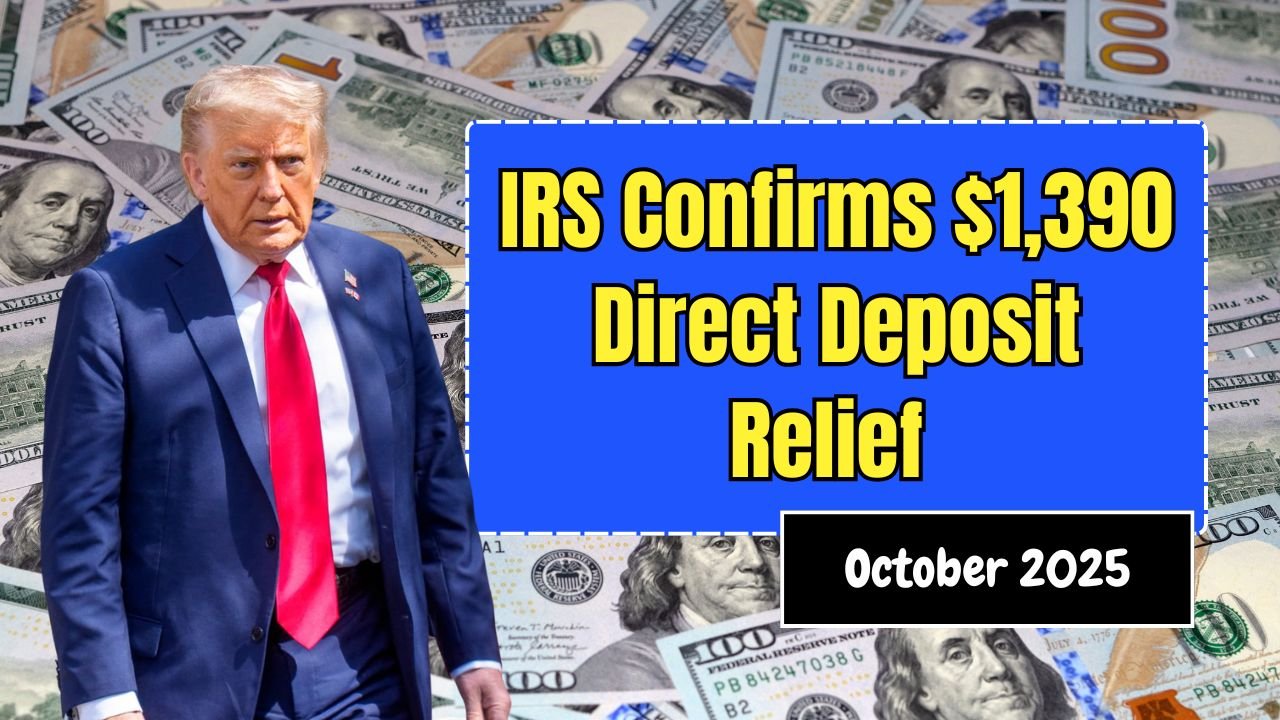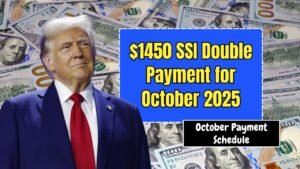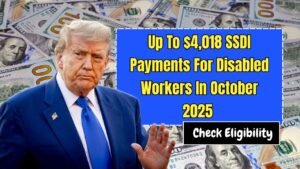The IRS has announced a $1,390 direct deposit relief payment scheduled for October 2025, intended to help Americans manage increased costs due to inflation, rising utilities, healthcare, and daily expenses.
This financial support is designed to reach millions via direct deposit into bank accounts, minimizing delays and eliminating the need for paper checks.
This relief is portrayed as a one-time payment—not part of a recurring program—and aims to offer quick financial stability ahead of year-end pressures.
Who Qualifies for the Relief?
Eligibility is based on 2024 tax filings, income thresholds, and federal benefit status. Key qualifying criteria include:
- Single filers with adjusted gross income up to $75,000 may receive the full $1,390.
- Married couples filing jointly with combined income up to $150,000 are also considered eligible.
- Head-of-household filers may have higher income thresholds.
- Dependents may influence the final amount paid to a household.
- Individuals who filed their 2024 taxes with direct deposit information are prioritized for fast transfers.
- For those without a bank account on file, the IRS may issue paper checks or prepaid debit cards, though those options typically take longer.
- Automatic eligibility is also extended to groups such as Social Security beneficiaries, veterans, and SSI recipients, with payments directed into existing benefit accounts.
Important: Ensure your banking and IRS profile information is accurate and current to avoid delays.
Payment Schedule: When to Expect the Deposit
The IRS plans to distribute payments in batches throughout October 2025. The schedule generally looks like this:
| Payment Method | Expected Dates | Notes |
|---|---|---|
| Direct Deposit | Oct 3 – 10 | Bank accounts on file should receive funds early |
| Paper Checks | Oct 15 – 25 | Mailed out to those without direct deposit info |
| Prepaid Debit Cards | Oct 20 – 30 | Issued to households lacking bank accounts |
Recipients using direct deposit can expect faster access, often within days of the deposit. Mailed checks or card deliveries may lag depending on processing and postal service delays.
The IRS is also expected to relaunch a “Get My Payment” status tool by late September 2025. This allows individuals to track their relief payment in real time, including deposit estimates and status updates.
How the IRS Distributes the Relief — No Extra Application for Most
Most eligible Americans won’t need to take extra steps to claim this payment:
- If your 2024 tax return is filed and includes direct deposit details, the IRS will automatically deposit the relief into your account.
- If your banking or address information changed, update it in your IRS profile before the deadline.
- If you didn’t file in 2024 but qualify via benefits, you may still receive the relief automatically (especially Social Security, SSI, or veterans).
- Use the IRS “Get My Payment” tool once it’s live to confirm status and payment date.
Accuracy in household information, dependent claims, and bank details is crucial, since the IRS bases payout amounts on these factors.
Why This Payment Is Important
This relief comes at a time when many Americans are struggling with:
- Escalating grocery, fuel, and energy costs
- Rising healthcare expenses
- Ongoing inflation pressures across essentials
The $1,390 direct deposit is meant to provide immediate liquidity and reduce stress for families, retirees, and workers balancing stiff budgets.
Because it is tax-free and non-repayable, recipients can use it freely for everyday necessities without worrying about reductions in other benefits or tax liability.
Economists believe the injection of cash will also help stimulate local economies, as households spend on food, utilities, rent, and other essentials.
Possible Future Relief and Broader Impacts
While the $1,390 relief is currently a one-time program, some lawmakers have floated ideas for additional payments in 2026, particularly targeting families, seniors, or regions with higher cost burdens. However, no new federal relief has been officially confirmed.
States may also enact complementary programs that build on federal relief, such as energy rebates, housing subsidies, or additional cash payments.
Regardless of future measures, this October 2025 deposit represents a key federal effort to support households during persistent economic strain.
The $1,390 direct deposit relief from the IRS is a significant financial measure for October 2025, aimed at delivering fast, meaningful support to millions of Americans coping with high living costs. With automated distribution, a clear payment schedule, and broad eligibility criteria, this program seeks to balance speed, inclusivity, and fairness.
If you’re expecting to qualify, make sure your banking information, address, and IRS account details are current.
Use the upcoming payment tracking tool to monitor status and don’t hesitate to double-check your eligibility before the deposits begin. With proper preparation, you’ll be best placed to receive this relief smoothly and promptly.
FAQs
Do I need to file an application to receive the $1,390 relief?
No, most recipients will receive the payment automatically, provided they filed their 2024 tax return or receive qualifying federal benefits.
Is the $1,390 payment taxable or count as income?
No. This relief payment is expected to be tax-free and excluded from benefit calculations, meaning it won’t reduce your existing benefits.
What if I didn’t file a 2024 tax return?
Some non-filers may still qualify through existing benefit records (e.g., Social Security, SSI, veteran benefits). It’s best to check the IRS portal and ensure your information is up to date.



